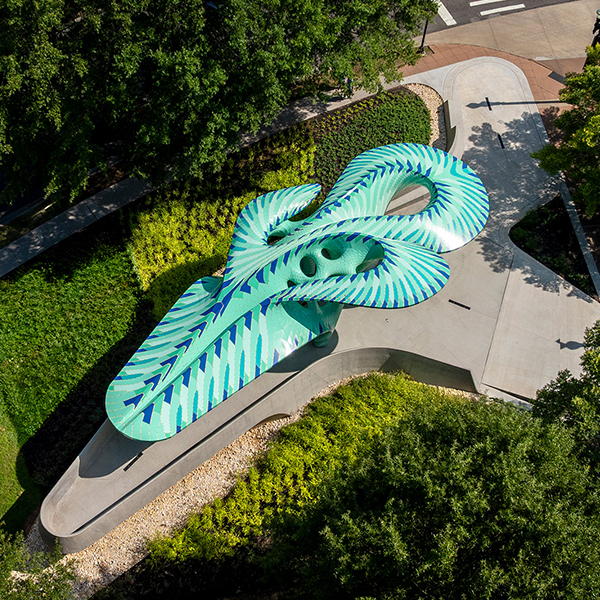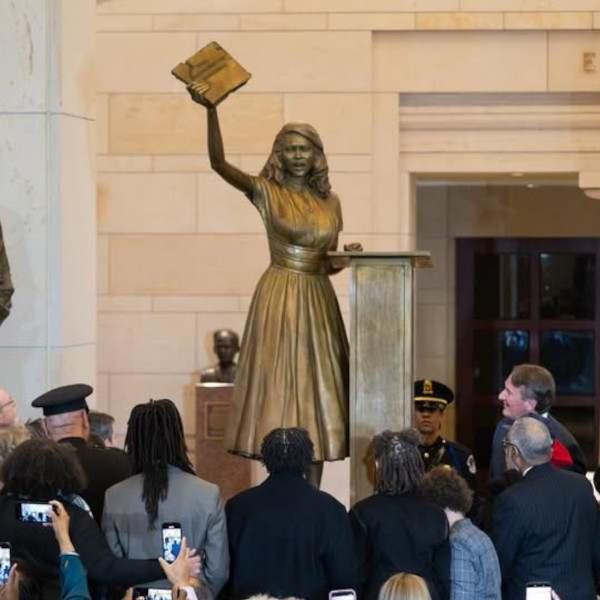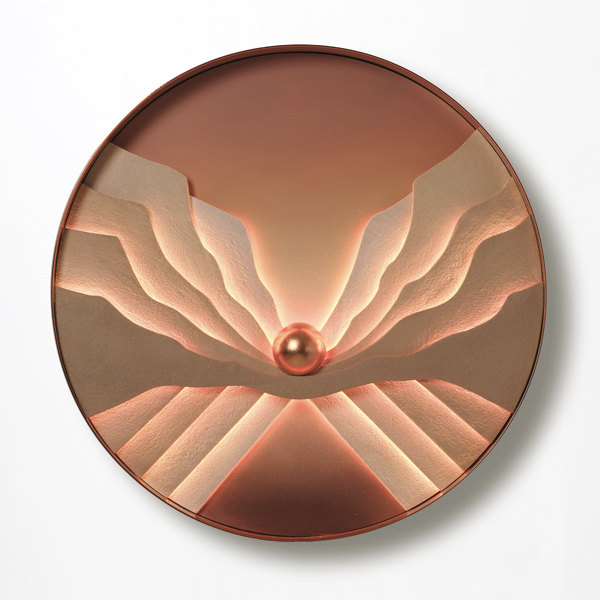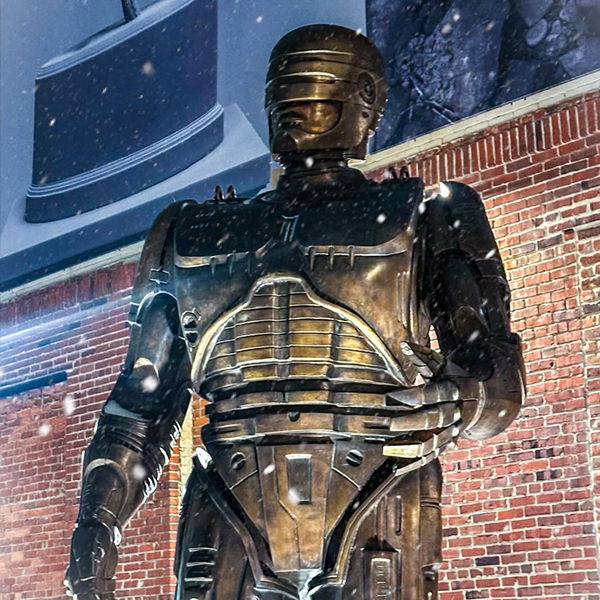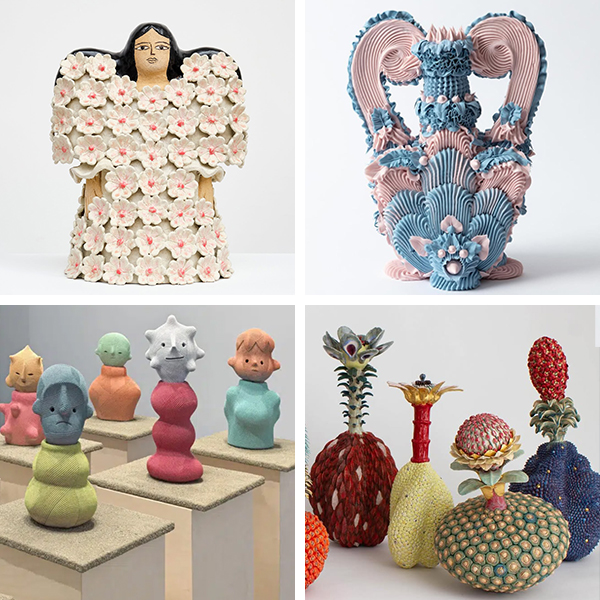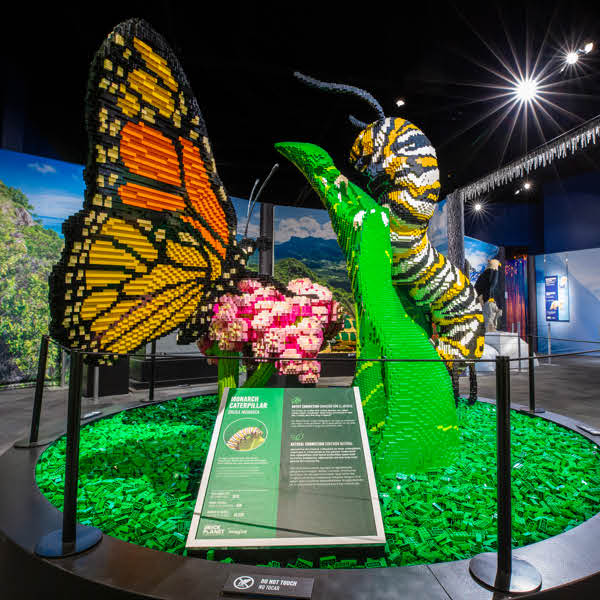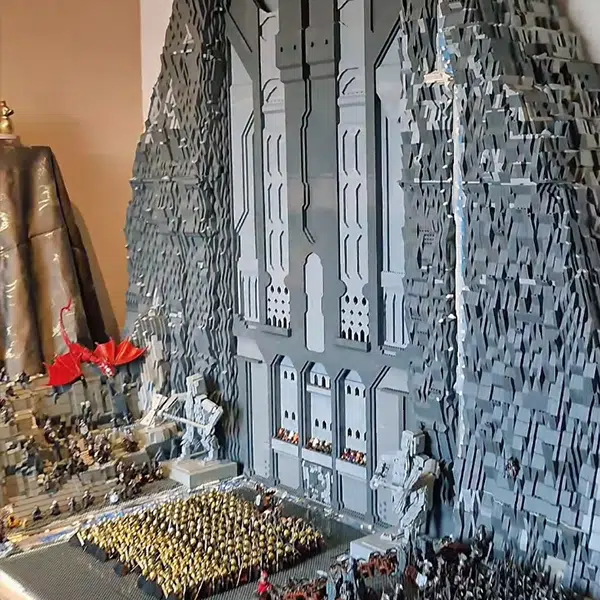
Photo: Salar Jung Museum
Tucked away on the second floor of a museum in India is a hypnotic wood sculpture. A man stands with his chest arrogantly puffed out as he gazes into the room. In the mirror behind him, we see a demure woman with her head bowed slightly. This incredible double statue features both characters within the same block of wood, but on opposite facing sides. The sculpture's theatrical scene truly unfolds when a mirror sits behind the male figure (which would mean it's in front of the female figure), making it appear as though the woman is standing behind the man. She doesn't dare look at him, but rather studies the floor. Literature lovers will immediately understand who these contrasting figures represent. Known as Mephistopheles and Margaretta, A Double Statue, the mesmerizing duo are clearly the protagonists from Goethe's iconic Faust.
Published in 1808, Faust is a classic battle of good and evil. With his large mustache and devilish grin, the male figure is clearly Mephistopheles—better known as the devil. By signing a pact in blood, Faust makes the original deal with the devil—one that ends in dire consequences with murder and eternal damnation when he falls in love with Gretchen—also known as Margaretta. It's a classic tale of tragedy, as Faust follows the devil to satisfy his personal ambitions, only to realize the error of his ways far too late. Dating back far further than Goethe, the Faust legend has subsequently been the subject of numerous novels, poems, plays, musical compositions, and artworks.
This particular sculpture, which is located in the Salar Jung Museum in Hyderabad, India is captivating for the artist's ability to relay the narrative effectively and evocatively. Created in the 19th century by an unknown French artist, it's among the most photographed pieces of art in the collection. Seeing as it sits in one of the largest museums in the world, this says something about its impact.
These two figures—carved from a single sycamore log—synthesize the dual nature of humanity as told through Faust. On one side we have the nefarious Mephistopheles, who immediately inspires fear just by looking into his mischievous eyes. On the other, Gretchen's refusal to look up at the devil could be seen as a metaphor for what unfolds in the story. While Gretchen turns away from evil, Faust ran right toward it in a quest to find happiness and possess endless knowledge.
This incredible double sculpture is a retelling of Faust through one piece of wood. On one side, you have a man standing arrogantly; on the other, there's a demure woman with her head bowed slightly.
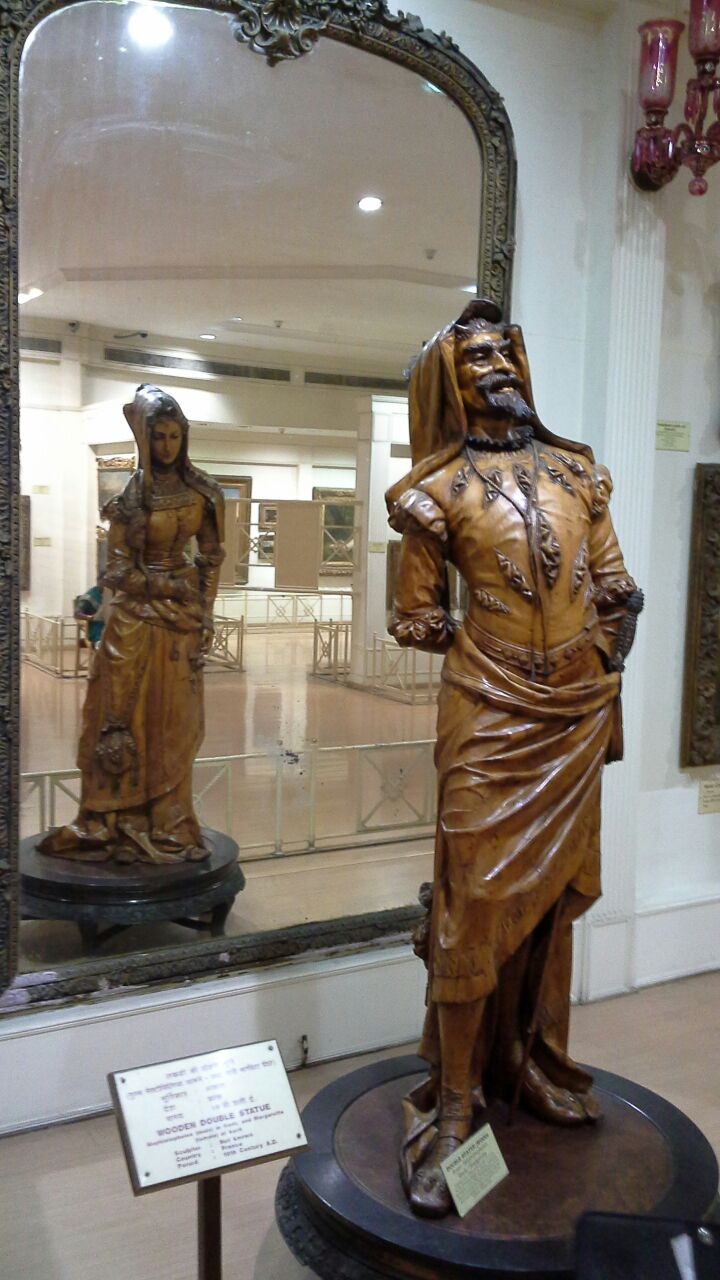
Photo: NAGASREENIVASARAO PUPPALA [CC BY-SA 4.0], via Wikimedia Commons
Related Articles:
Spooky Wall Sculptures of Victorian Ghosts Emerging from a Mirror
Fall in Love with 5 of Art History’s Most Romantic Masterpieces
Spooky Wall Sculptures of Victorian Ghosts Emerging from a Mirror
Exquisite 19th-Century Sculpture Cloaked in a “Translucent” Marble Veil












































































